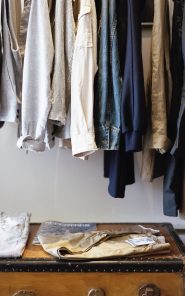


The length can be in the limbs and torso, usually both, and the bone structure will be narrow. Nothing about style or fashion is serious, and at the end of the day- do whatever will make you feel good.ĭramatics have a long vertical line, meaning their dominant attribute you’ll notice first is their length. Everything has the intention to be objective and just for fun. If you are sensitive to this topic, please skip out on this one. I also want to put a disclaimer here that we will discuss bodies and body characteristics in this article. Every single one of the body types has dozens of verified bombshells. Costumes can even go directly against lines and silhouettes to produce the desired result, such as a character undergoing a transformation or making a character appear quirky.įinally, don’t worry about what type you may be or try to force yourself into a body type based on a preconceived notion you may have. The fashion and entertainment industries use body types to their advantage for casting.
#Closet for true autumn dramatic classic how to
It’s more than just knowing what looks best or most flattering on your body, but it’s about how to create an effect. These are surprisingly the characteristics that not only give off our overall essence but how clothes and certain styles flatter or oppose us. Instead, it focuses on the things that contribute to how clothes will fit the body and what effect they will give off.įor example, it focuses on bone structure, how we gain fat and muscle, our softness versus tautness of flesh, angularity versus roundedness, etc. It doesn’t focus on the traits we’re programmed to notice, such as actual cup size, weight, or muscularity. The Kibbe system focuses more on objective attributes and less on those attributes that have traditionally made women feel insecure, which is why it’s so empowering and body positive. Adjectives that describe Yang are long, vertical, sharp, angular, and bold, contrasted to yin, which is petite, soft, rounded, and lush. So the scale goes from Yang to yin in the order: Dramatic, Soft Dramatic, Flamboyant Natural, Soft Natural, Dramatic Classic, Soft Classic, Flamboyant Gamine, Soft Gamine, Theatrical Romantic, and Romantic. When I use the word “verified” in this article, it means David Kibbe himself has categorized this person as a particular type. Since this is pretty unrealistic, we have to use the information we have to classify ourselves the best we can. You should note that no one will ever be “verified” unless David Kibbe was to confirm himself. To be clear, I typed myself as a Theatrical Romantic based on a myriad of research, observation, and intuition. I’ll be using my Kibbe body type and analysis as a case study so you can see how I determined what body type I am so you can do the same. I am a theatrical romantic, which sits at the second to most yin on the scale. At the most yang end of the scale, you have Dramatics, and at the very most yin end of the scale, you have Romantics. The Kibbe body typing theory, founded by David Kibbe, works on a scale of yin to Yang.


 0 kommentar(er)
0 kommentar(er)
